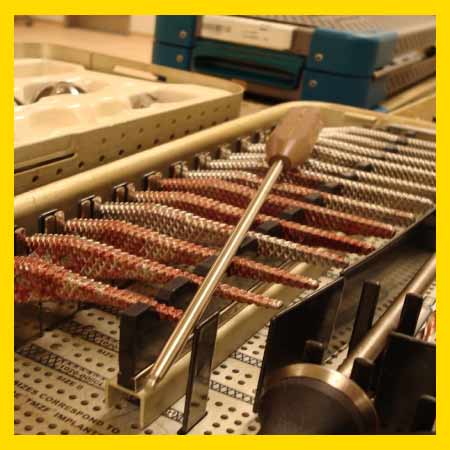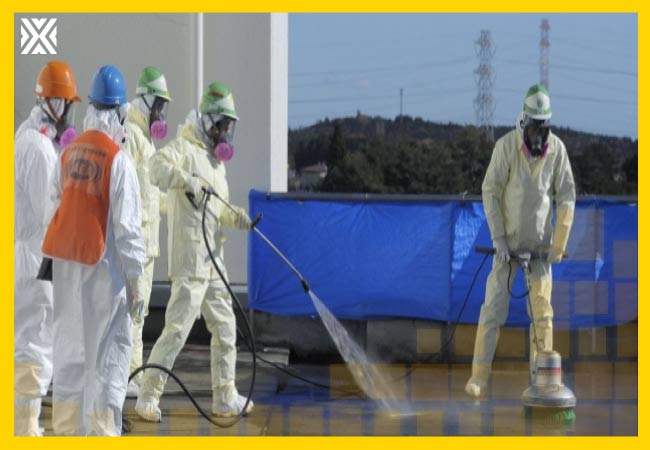Currency
March 14, 2020

1. Background and scope of guidance
The advice in this document can be applied to any non-healthcare setting such as workplaces, offices, waiting rooms, hotel rooms, student accommodation and boarding schools where a possible or confirmed COVID-19 case has spent time while symptomatic. For the purposes of this guidance, a possible case of COVID-19 is someone undergoing testing but COVID-19 has not yet been excluded, and a confirmed case is someone known to have a positive laboratory test for COVID-19.
The guidance describes the cleaning required, the appropriate disposal of materials, the disinfection of equipment and hard surfaces, and the personal protective equipment (PPE) that should be worn. There is separate published guidance for healthcare settings and for those in self isolation at home.

Previous experience of new coronaviruses (SARS-CoV & MERS-CoV) has been used to inform this guidance. The risk of infection transmission depends on numerous factors, including the type of surfaces contaminated, the amount of virus shed from the individual, the time the individual spent in the setting and the time since the individual was last in the setting.
The infection risk from environmental contamination will decrease over time, but it is still unclear at what point there is no risk of transmission from the environment; however, studies of SARS and MERS suggest that, in most circumstances, the risk is likely to be reduced significantly after 72 hours.
2. Information about the virus
A coronavirus is a type of virus. As a group, coronaviruses are common across the world. COVID-19 is caused by a new strain of coronavirus first identified in Wuhan City, China in December 2019.
The incubation period of COVID-19 is between 2 and 14 days. This means that if a person remains well 14 days after contact with someone with confirmed coronavirus, they are unlikely to develop symptoms.
3. Signs and Symptoms of COVID-19
The following symptoms may develop in the 14 days after exposure to someone who has COVID-19 infection:
Generally, these infections can cause more severe symptoms in people with weakened immune systems, older people, and those with long-term conditions like diabetes, cancer and chronic lung disease.
4. How COVID-19 is spread
From what we know about other coronaviruses, transmission of COVID-19 is most likely to happen when there is close contact (within 2 metres) with a symptomatic individual. It is likely that the risk of transmission increases the longer someone has close contact with an infected person.
Respiratory secretions produced when an infected person coughs or sneezes containing the virus are most likely to be the main means of transmission.
There are two main routes by which COVID-19 can be transmitted:
There is currently no evidence that people who are without any symptoms are infectious to others. This evidence will be kept under constant review.
5. How long the virus can survive
How long any respiratory virus survives will depend on a number of factors, for example:
Under most circumstances, the amount of infectious virus on any contaminated surfaces is likely to have decreased significantly by 72 hours.
We know that similar viruses are transferred to and by people’s hands. Therefore, regular hand hygiene and cleaning of frequently touched surfaces will help to reduce the risk of infection.
6. Principles of environmental decontamination after the case has left the setting or area
6.1 Personal protective equipment (PPE)
The minimum PPE required to be worn for decontaminating an area where a possible or confirmed case has been includes disposable gloves and apron. Hands should be washed with soap and water after all PPE has been removed.
If a risk assessment of the setting indicates that a higher level of contamination may be present (for example where unwell individuals have slept such as a hotel room or boarding school dormitory) or there is visible contamination with body fluids, then the need for additional PPE such as a surgical facemask and full-face visor should be considered. The local Health Protection Team can advise on this.
Most other settings where the person has spent shorter periods of time (such as a waiting room, cinema, restaurants, gyms) are likely to have lower levels of contamination and therefore the risk of onward transmission of infection will be lower.
6.2 Cleaning and disinfection
Public areas where a symptomatic individual has passed through and spent minimal time in (such as corridors) but which are not visibly contaminated with body fluids can be cleaned as directed by any existing workplace risk assessment or manufacturer’s instructions on the safe use of their cleaning products.
All surfaces that the symptomatic person has come into contact with must be cleaned and disinfected, including:
Use disposable cloths or paper roll and disposable mop heads, to clean and disinfect all hard surfaces or floor or chairs or door handles and sanitary fittings in the room, following one of the two options below:
if an alternative disinfectant is used within the organisation, this should be checked and ensure that it is effective against enveloped viruses
Avoid creating splashes and spray when cleaning.
Any cloths and mop heads used must be disposed of and should be put into the waste bags as outlined below (see section 6.4)
When items cannot be cleaned using detergents or laundered, for example upholstered furniture and mattresses, steam cleaning may be used.
Spillages of blood and body fluids should be managed in accordance with the organisations spillage policy, before cleaning and disinfection. If any items are heavily contaminated with body fluids and cannot be appropriately cleaned, consider discarding. Gain permission to do this from the owner.
If an area can be kept closed and secure for 72 hours, wait until this time for cleaning, as the amount of virus contamination will have decreased significantly. The area can then be cleaned as directed by any existing workplace risk assessment or manufacturer’s instructions on the safe use of their cleaning products.
6.3 Laundry
Items heavily soiled with body fluids should be disposed of. Gain the permission of the owner to do this.
Remove any clothes, soft or fabric window hangings and curtains, bedding and any other laundry items and place in a bag for transportation to the point of laundering. Do not shake items or avoid all necessary agitation.
Store the used linen put in a suitable and secure place and marked for storage until the individual’s test results are known.
If the individual test result is negative, usual laundering processes can be followed.
If the individual test result is positive:
6.4 Waste
Waste from possible cases and cleaning of areas where possible cases have been (including disposable cloths, tissues) should be put in a plastic rubbish bag and tied when full. The plastic bag should then be placed in a second bin bag and tied. It should be put in a suitable and secure place and marked for storage until the individual’s test results are known. Waste should NOT be left unsupervised awaiting collection. You should NOT put your waste in communal waste areas until negative test results are known or the waste has been stored for at least 72 hours.
If the individual test is negative, this can be put in with the normal waste.
If the individual tests positive, then store it for at least 72 hours and put in with the normal waste.
If storage for at least 72 hours is not appropriate, arrange for collection as a Category B infectious waste either by your local waste collection authority if they currently collect your waste or otherwise by a specialist clinical waste contractor. They will place your bags in orange infectious healthcare waste bags for appropriate treatment.
6.5 Follow up of persons involved in environmental decontamination
The names and contact details of those carrying out cleaning of an area that a possible case has been in should be recorded by the person responsible for this setting. As part of the contact tracing process for a confirmed case, the local Health Protection Team will advise on arrangements for follow up required for 14 days after the cleaning process took place.









